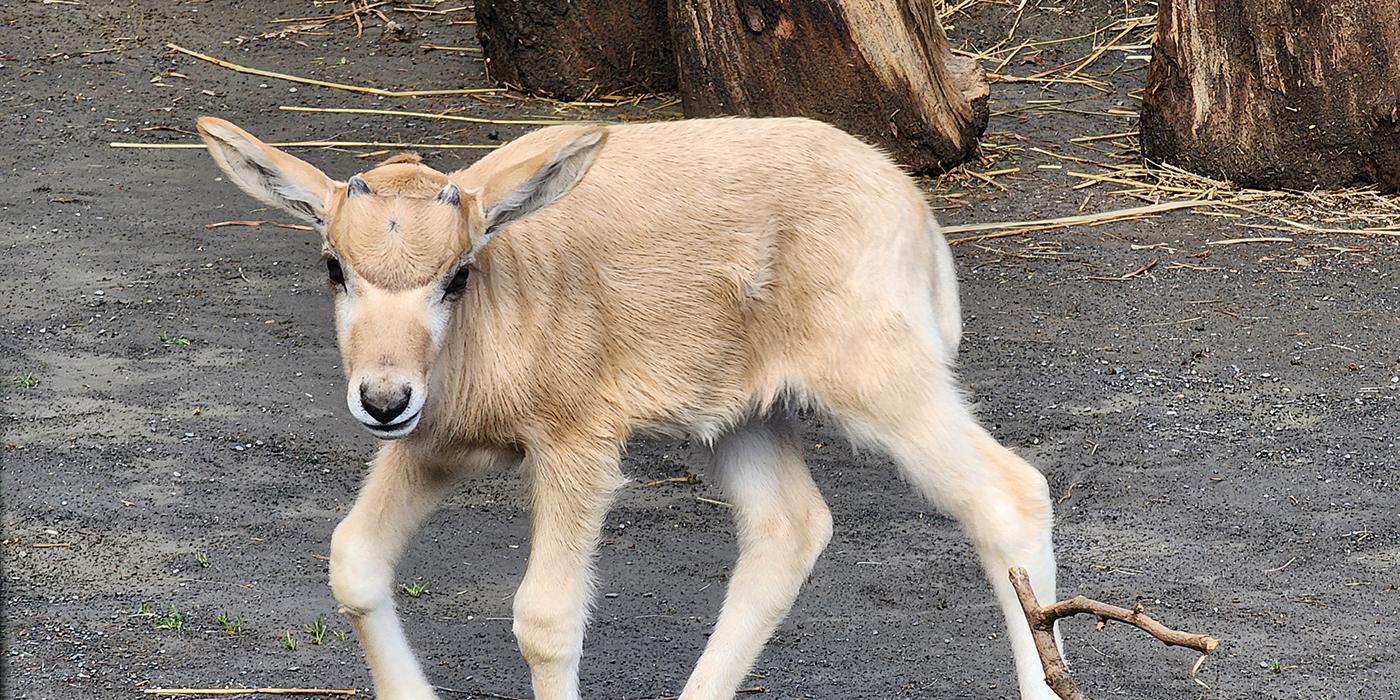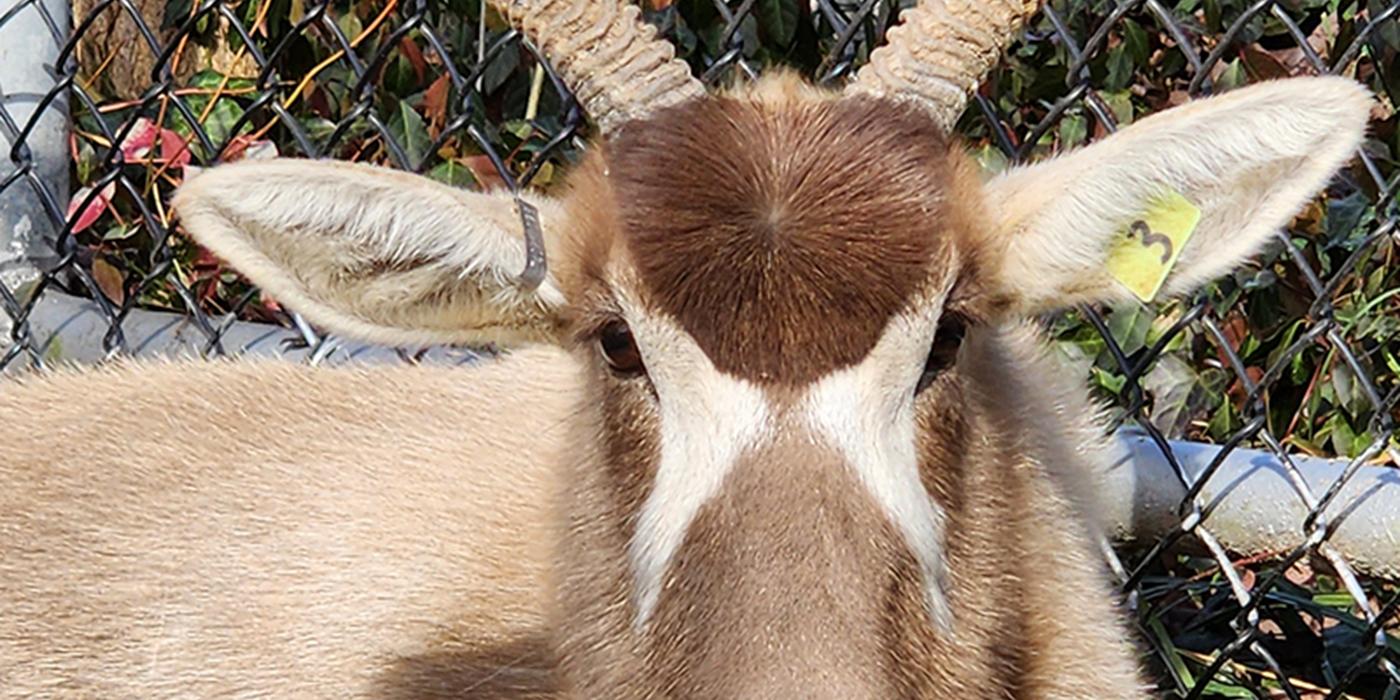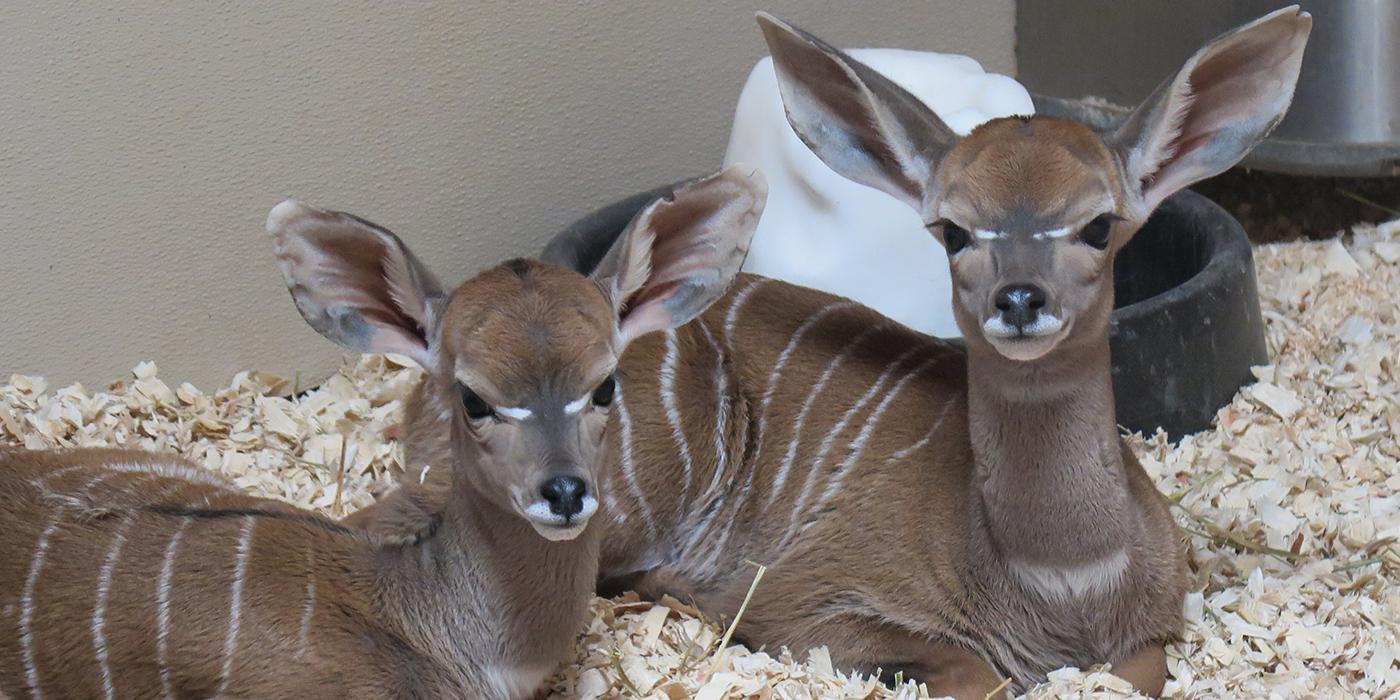New at the Zoo: Dama Gazelle Calves
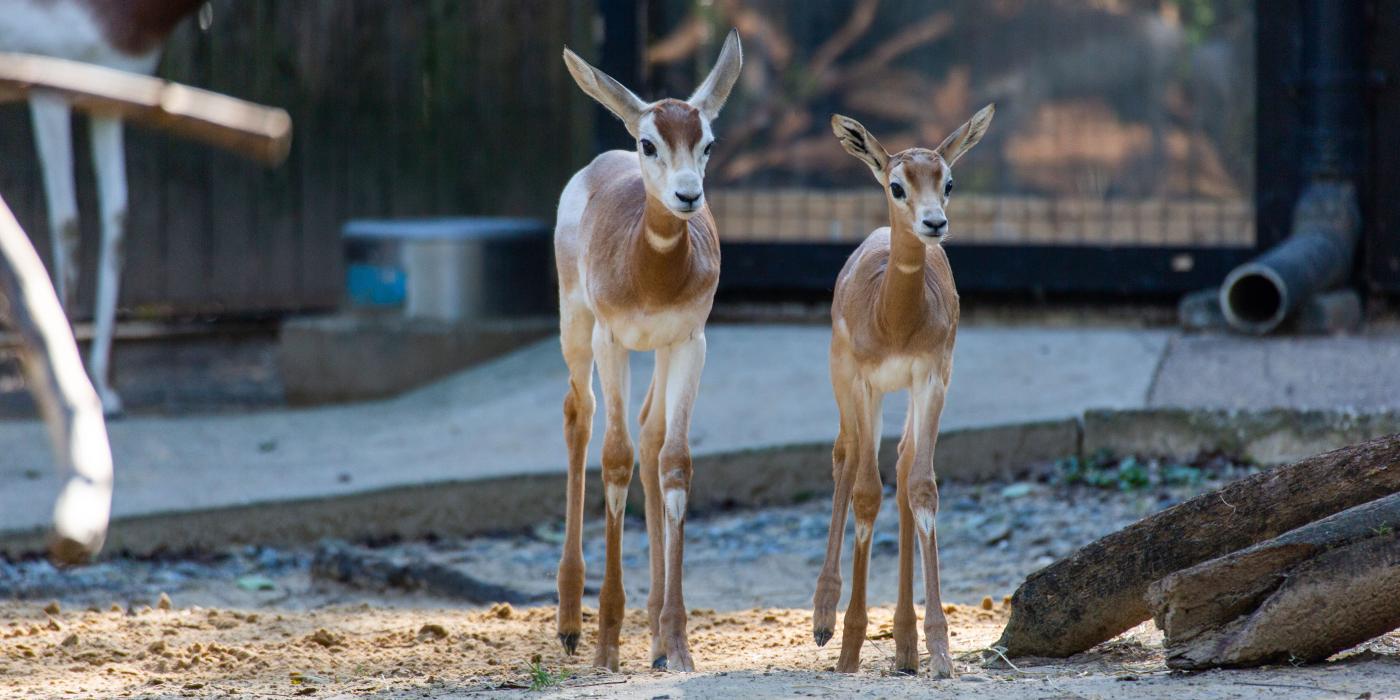
Cheetah Conservation Station keepers are celebrating a dama gazelle baby boom! Two young calves, Gustav and Amaya, recently made their debut. Learn all about the newest members of our herd from assistant curator Gil Myers.
How are the dama gazelle calves doing?
Our male and female dama gazelle calves are doing well, growing fast and becoming more independent by the day. Our male calf, Gustav, will be two months old Nov. 7, and he has a fearless and confident personality. As for our female calf, Amaya, her personality is still a bit of a mystery. She will turn one month old Nov. 9. At her age, it is normal for dama calves to be rather secretive and quiet. Over the next few weeks, she will become more comfortable exploring, and we will get a better sense of her personality.
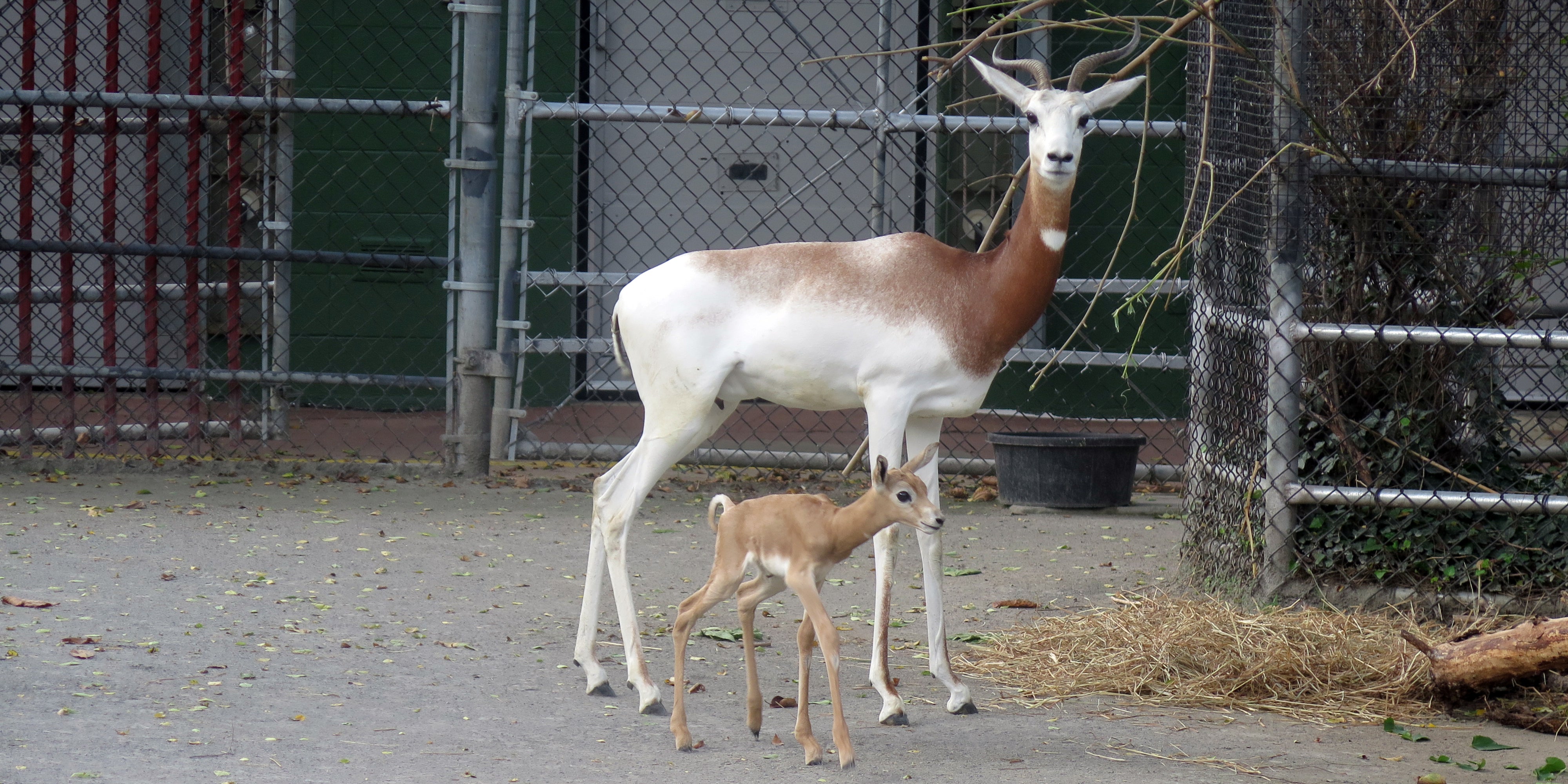
How do the calves spend their day?
When we first gave Gustav and Amaya access to the yard, they took advantage of all the space they had to roam and began running and stotting—a bouncy hop where all four hooves are off the ground. Gustav spends quite a bit of time with the adults, too, and is frequently out in the open. Amaya tends to do a behavior called “tuck and hide,” where she curls up on the ground in a pile of browse or hay. In the wild, calves do this behavior to hide from predators.
Both calves are starting to build social relationships with their herd members. Gustav and Amaya share the habitat with their mothers, 1-year-old sister, Asha, and 11-year-old grandmother, Adara. As they grow, we expect that they will interact with their herd more frequently. They are already quite curious and will approach the adults and sniff them. Occasionally, they will press their heads against the adults’ heads as if they are going to spar—a natural play behavior. The adults recognize that they are calves and will play carefully and gently. Sometimes, if they are not in the mood to play, they might nudge the calves a bit or just walk away.What do they eat?
Dama gazelle calves typically nurse from their mothers for six to eight months. As the calves get older, the length and frequency of nursing sessions decreases. It is up to mom’s discretion as to how frequently her calf nurses. For example, Gustav’s mother, Zafirah, will sometimes walk away from her son when he is trying to nurse. When she does this, Gustav will walk over to Amaya’s mother, Fahima, to nurse. Sometimes she tolerates this, and sometimes she, too, walks away to ensure her daughter has enough milk.
The calves are already sampling some of the adults’ foods, including pellets and alfalfa. Dama gazelles are born with a full set of teeth, though as they age they will eventually lose those baby teeth, and their permanent adult set will grow in. Gustav and Amaya seem to like leafy browse (tree branches) and will nibble on the leaves and bark. We have also spotted them eating tree leaves that fall into their exhibit. Gustav is now eating more solids than nursing, and although Amaya is testing all food sources, she still relies most on her mother’s milk.
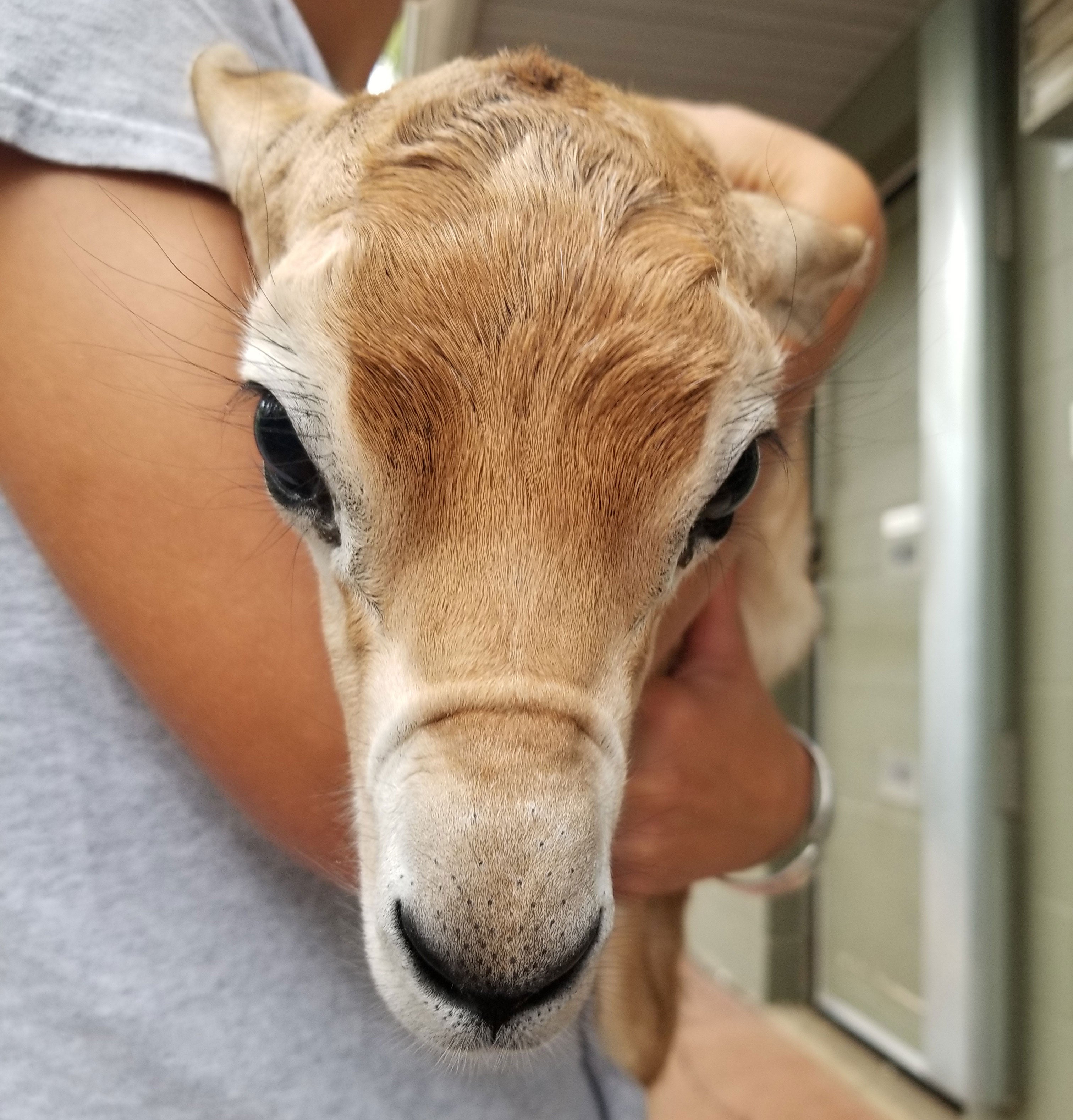
Why does the Zoo breed this species?
Dama gazelles are critically endangered, and scientists estimate that less than 500 individuals remain in the wild. As a member of the Association of Zoos and Aquariums’ species survival plan for dama gazelle, our goal is to help build up the population in human care. The North American population currently has more than 180 individuals. Down the road, it is possible that conservation organizations will reintroduce some of these animals back into protected areas in the wild. Our Smithsonian Conservation Biology Institute scientists assisted with a similar effort to reintroduce scimitar-horned oryx.
Related Species:

